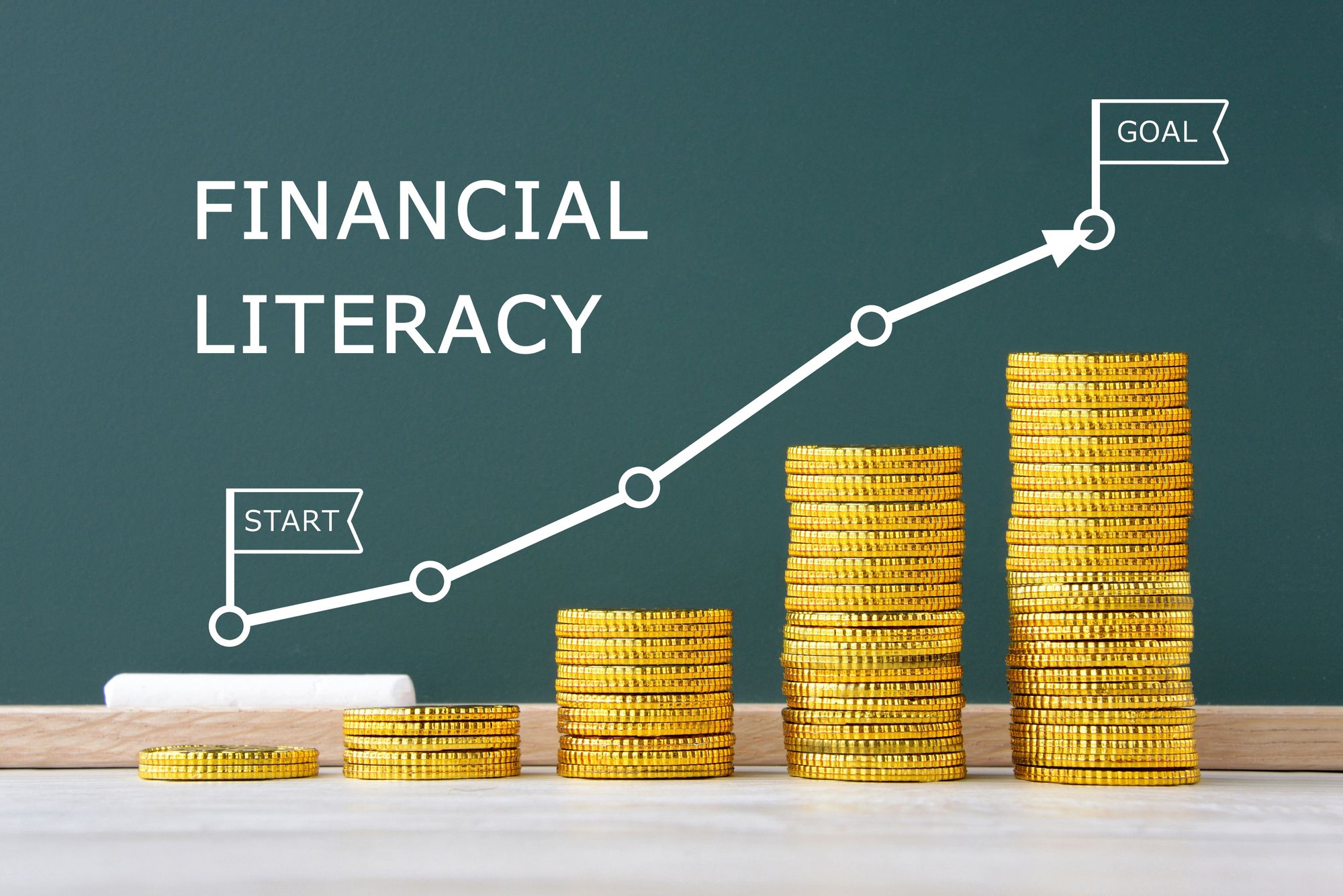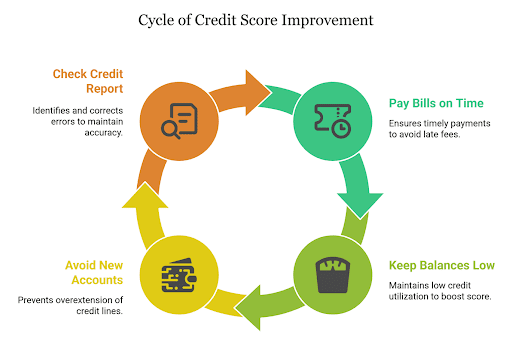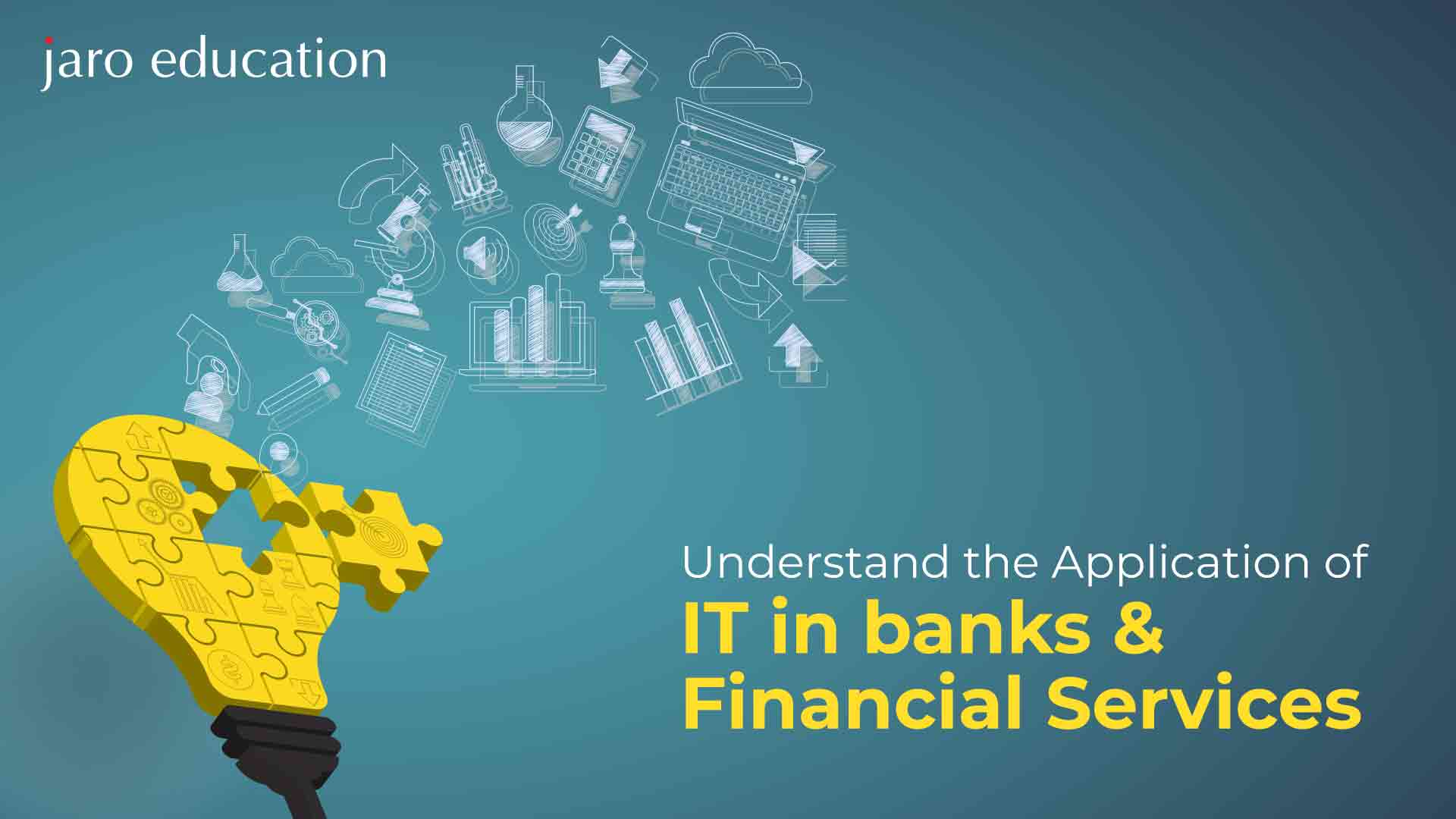What Is Financial Literacy? Importance, Benefits, and Key Skills for Beginners
Table of Contents

- jaro Education
- 14, August 2024
- 9:00 am
Managing personal finances is a critical life skill, yet many individuals still lack even the most basic financial literacy. Whether you are a student entering adulthood or a developed individual aiming to take control of your finances, whatever the case may be, money matters should be understood by any individual. It becomes more important to know finance while living in a rapidly growing economy like India, with almost no awareness regarding financial planning. Hence, it is important to get basic financial literacy.
In this blog, we will discuss why financial knowledge and skills are important, the status of financial literacy in India, and the important concepts every beginner should understand to secure a financial future, one informed decision at a time.
Why Financial Literacy?
Financial literacy is the ability to understand and effectively use various financial skills, including personal financial management, budgeting, and investing. It is crucial in today’s world as it equips individuals with the knowledge and skills needed to make informed financial decisions.

*KreditBee
Key components of financial literacy include:
- Budgeting: Understanding how to create and maintain a budget.
- Saving and Investing: Knowing the importance of saving and the basics of investing.
- Credit Management: Understanding how credit works and how to manage debt.
- Financial Planning: Setting financial goals and developing plans to achieve them.
Statistics show that many people lack basic financial literacy. For instance, according to Business Standard, surveys reveal that only 27 percent of India’s population is financially literate. Additionally, only 16.7 percent of Indian students have a basic understanding of finance and money management. This situation highlights the urgent need for improved financial education.
Common myths and misconceptions about personal finance can lead to poor financial decisions. For example, some people believe that investing is only for the wealthy or that carrying a credit card balance helps your credit score. In reality, investing can be accessible to everyone, and carrying a credit card balance can lead to high-interest charges and debt.
Debunking these myths with facts and real-life examples is essential to improving financial literacy. For instance, investing in a diversified portfolio can be done with relatively small amounts of money, and paying off your credit card balance in full each month is one of the best ways to maintain a healthy credit score.
Financial Literacy in India: A Growing Need
Current Situation
India, one of the fastest-growing economies, suffers from a huge discrepancy in financial literacy. According to survey data from the RBI and SEBI:
- Less than 30% of Indians qualify as financially literate.
- The majority are not aware of concepts such as interest rates, inflation, or different types of savings.
- These become especially unknown to those in rural and economically backward environments.
Why the Gap?
- There is no formal finance education in schools and colleges
- Societal taboo to discuss money openly
- Inaccessibility of financial services in the country
- Use of complicated terminology in banking and investments
Government Initiatives
For enhancing financial awareness, the government, along with RBI, SEBI, NPCI, etc., has launched several programs like:
- Financial Literacy Week
- Jan Dhan Yojana
- National Centre for Financial Education (NCFE)
- Awareness programs for digital banking
The campaigns are currently delivering some early success, but much progress needs to be made.
Financial Literacy for Beginners: Financial Knowledge and Skills
- Budgeting Basics
First and foremost, creating and maintaining a budget is a fundamental aspect of financial planning. Specifically, a budget helps you track your income and expenses, thereby ensuring that you live within your means and allocate money towards your financial goals.
Moreover, budgeting aids in financial planning and control by providing a clear picture of your financial situation. Additionally, it allows you to identify areas where you can cut back on spending and allocate more towards savings and investments.
Step-by-Step Guide to Creating a Realistic Budget:
List Your Income | Track Your Expenses | Categorize Expenses | Set Budget Goals | Adjust as Needed |
Include all sources of income, such as salary, freelance work, and passive income. | Record all your expenses, including fixed costs (rent, utilities) and variable costs (groceries, entertainment). | Group your expenses into categories like housing, food, transportation, and savings. | Determine how much you want to allocate to each category, ensuring that your expenses do not exceed your income. | Regularly review and adjust your budget to reflect changes in income or expenses. |
Tips for Tracking Expenses and Adjusting the Budget:
Use tools and apps for expense tracking, such as Mint or YNAB (You Need a Budget).
Keep all receipts and regularly review your spending to ensure you stay within your budget.
Adjust your budget categories if you find you are consistently overspending or underspending in certain areas.
- Saving Strategies
Saving is essential for both emergencies and future financial goals. Firstly, an emergency fund provides a financial safety net, while savings for future goals, such as buying a home or retirement, additionally ensure long-term financial security.
To begin with, the concept of an emergency fund is simple: set aside money in a separate account to cover unexpected expenses, such as medical bills or car repairs. Moreover, financial experts recommend having three to six months’ worth of living expenses in your emergency fund to further enhance your financial stability.
Different Types of Savings Accounts and Their Benefits:
Regular Savings Accounts | Offer easy access to funds but typically have lower interest rates. |
High-Yield Savings Accounts | Provide higher interest rates, making them ideal for longer-term savings. |
Certificates of Deposit (CDs) | Offer higher interest rates but require you to lock in your money for a set period. |
Comparison of Savings Accounts | High-Yield Accounts and CDs |
- Regular savings accounts are best for immediate access to funds.
- High-yield savings accounts are suitable for earning more interest on your savings without long-term commitments.
- CDs are ideal for long-term savings goals where you won’t need immediate access to the funds.
Tips for Building a Robust Savings Habit:
Set up automated savings plans to transfer money to your savings account regularly.
Participate in savings challenges, such as the 52-week savings challenge, to stay motivated.
Reward yourself for reaching savings milestones to maintain motivation.
By following these strategies and tips, you can build a strong foundation for financial literacy and achieve your financial goals.
- Debt Management
Debt management is a critical component of financial literacy. It involves understanding different types of debt and strategies to manage and reduce it effectively. Debt can be categorized into two types: good debt and bad debt.
Good debt typically includes loans that have the potential to increase your net worth or enhance your life in meaningful ways, such as student loans or mortgages. Specifically, these debts are considered investments in your future. For example, student loans can provide access to education, which can lead to better job opportunities, whereas mortgages allow you to own a home, which can appreciate over time.
Conversely, bad debt includes high-interest debt that does not provide long-term benefits, such as credit card debt or payday loans. In contrast, these debts can quickly spiral out of control if not managed properly, ultimately leading to financial strain.
Strategies for Managing and Reducing Debt:
- Debt Snowball Method: Focus on paying off the smallest debts first while making minimum payments on larger debts. This method can provide quick wins and motivation.
- Debt Avalanche Method: Prioritize paying off debts with the highest interest rates first. This method minimizes the amount of interest paid over time.
- Negotiating Lower Interest Rates and Consolidation Options:
- Contact creditors to negotiate lower interest rates, which can reduce your monthly payments and the total amount of interest paid.
Consider debt consolidation, which involves combining multiple debts into a single loan with a lower interest rate. This can simplify payments and potentially lower your interest costs.
Importance of Maintaining a Good Credit Score
A good credit score is essential for accessing favorable loan terms and interest rates. It impacts your ability to borrow money, rent an apartment, and sometimes even get a job.
How Credit Scores are Calculated and Their Impact on Financial Health
Credit scores are calculated based on factors such as payment history, amounts owed, length of credit history, new credit, and types of credit used. A high credit score indicates responsible credit behavior and can lead to better financial opportunities.

How Credit Scores are Calculated and Their Impact on Financial Health:
- Pay your bills on time, every time.
- Keep your credit card balances low.
- Avoid opening multiple new credit accounts in a short period.
- Regularly check your credit report for errors and dispute any inaccuracies.
Top Strategies for Investing Wisely in 2025
Investing is a powerful tool for building wealth and achieving financial goals. Starting early and leveraging the power of compound interest can significantly enhance your financial future.
The sooner you start investing, the more time your money has to grow through compound interest, where your investment earnings generate their earnings over time.
Overview of Different Investment Options:
Stocks | Bonds | Mutual Funds |
Ownership in a company offers high potential returns but with higher risk. | Loans to governments or corporations typically offer lower returns with lower risk. | Pooled investments managed by professionals, offering diversification and professional management. |
Different investments come with varying levels of risk and potential return. Generally, higher-risk investments, like stocks, offer higher potential returns, while lower-risk investments, like bonds, offer more stability but lower returns.
Diversification essentially involves spreading your investments across different asset classes in order to reduce risk. Moreover, a well-diversified portfolio can protect you from significant losses.
Furthermore, your asset allocation should reflect your age, financial goals, and risk tolerance. For instance, younger investors can typically afford to take more risks, whereas older investors might prioritize stability and income.
Smart Tips for Planning for Retirement in India
Planning for retirement is essential for ensuring financial security in your later years. Starting early allows you to take advantage of compound interest and build a substantial nest egg.
Early planning provides more time to grow your savings, ensuring a more comfortable retirement. Delaying retirement planning can lead to inadequate savings and financial stress in your later years.
Different Retirement Savings Options:
- 401(k): Employer-sponsored retirement plan with tax advantages and potential employer match.
- IRA (Individual Retirement Account): Personal retirement account with tax benefits, available in traditional (tax-deferred) and Roth (tax-free withdrawals) options.
Tips for Maximizing Retirement Savings and Planning for a Comfortable Future:
- Take full advantage of employer match programs to maximize your savings.
- Utilize the tax advantages of retirement accounts to enhance growth.
- Use retirement calculators to set savings goals and track progress.
By understanding and applying these principles of financial literacy, budgeting, saving, debt management, investing, and retirement planning, you can achieve long-term financial stability and success. Embrace the resources and opportunities available through platforms like Jaro Education to enhance your financial literacy and secure your financial future.
Financial Tools and Resources
In today’s digital age, a plethora of financial tools and resources are available to help manage personal finances effectively. Here, we will explore some of the most useful apps and platforms, along with a curated list of top resources for enhancing financial literacy.
Overview of Useful Financial Tools and Apps:
- Budgeting Apps: Apps like CRED, Mint, YNAB (You Need A Budget), and PocketGuard help track expenses, create budgets, and monitor financial health.
- Investment Platforms: Platforms such as Groww, Upstox, and Zerodha offer easy access to various investment options with user-friendly interfaces.
- Financial Planning Tools: Tools like Personal Capital and Quicken provide comprehensive financial planning, including budgeting, investment tracking, and retirement planning.
Curated List of Top Resources with Brief Descriptions:
- “Rich Dad Poor Dad”: A classic book offering insights into building wealth through smart financial practices.
- Investopedia: Comprehensive online resource with detailed explanations of financial terms and concepts.
- Jaro Education: Our platform offers several finance-related courses that can significantly enhance financial literacy. These courses are designed to provide in-depth knowledge and practical skills for managing personal and professional finances.
Embrace the wealth of available resources to keep enhancing your financial literacy. Continuous learning is key to financial success.
Lifelong learning ensures you stay updated with the latest financial practices and can adapt to changes effectively.
Conclusion
Starting with understanding financial literacy and budgeting basics, moving on to saving strategies, debt management, investing, and planning for retirement, we’ve covered essential aspects of mastering personal finance along with practical tips. In particular, each section provides crucial knowledge and tools for achieving financial stability through enhanced financial literacy and success. Ultimately, understanding these concepts can significantly improve your financial health.
Financial literacy is vital for making informed decisions and achieving long-term financial goals. Proactive management and continuous learning are essential for financial success. Start your financial literacy journey today by applying the tips provided and leveraging available resources.
Frequently Asked Questions
Financial literacy refers to the ability to understand and use various financial skills, including budgeting, saving, investing, managing debt, and planning for retirement. It helps individuals make informed decisions about their money.
Financial literacy is important because it empowers individuals to manage their money effectively, avoid debt, plan for the future, and achieve financial independence. Without financial literacy, people are more likely to make poor financial decisions that can impact their long-term stability.
The key components of financial literacy include:
- Budgeting
- Saving and emergency funds
- Banking and digital payments
- Credit and debt management
- Investing
- Insurance
- Tax planning
- Retirement planning
Everyone can benefit from financial literacy — students, working professionals, homemakers, entrepreneurs, and retirees. It is a life skill that helps at every stage of life, from managing a student loan to planning for retirement.
Beginners can improve financial literacy by:
- Reading blogs and books on personal finance
- Watching educational videos or YouTube channels
- Taking online financial literacy courses
- Following trusted financial influencers
- Using budgeting apps and finance tools











1 thought on “What Is Financial Literacy? Importance, Benefits, and Key Skills for Beginners”
Excellent insights on the importance of financial literacy! This article highlights key concepts that everyone should understand for better financial decision-making. Very informative!